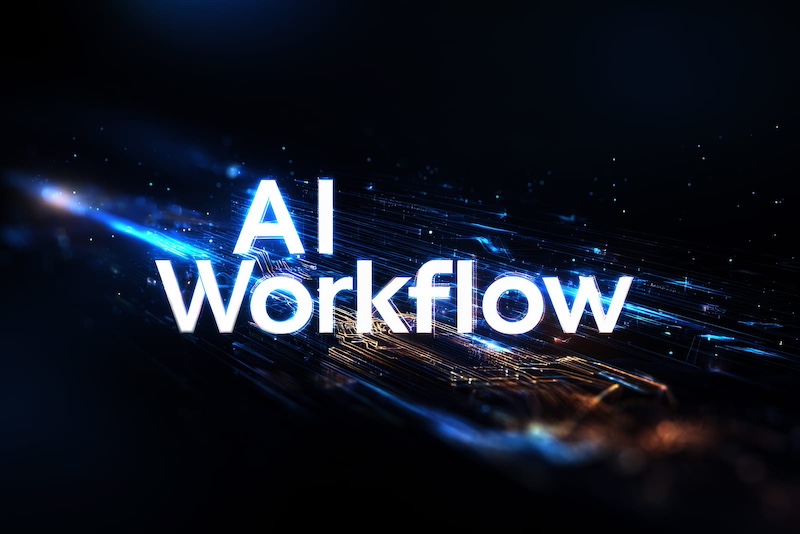A Complete Guide to AI Workflow Automation: What You Need to Know
The modern business environment demands unprecedented efficiency and adaptability. Organizations across industries struggle with repetitive manual tasks, inconsistent decision-making, and the growing complexity of interconnected business processes. Traditional workflow automation, while useful, often lacks the intelligence to handle nuanced situations or adapt to changing circumstances.
AI workflow automation emerges as a transformative solution that addresses these limitations. By integrating artificial intelligence with process automation, businesses can create systems that think, learn, and adapt rather than simply execute predetermined commands.
What Makes AI Workflow Automation Different
AI workflow automation represents a fundamental shift from rule-based automation to intelligent process management. Traditional systems follow fixed pathways and require extensive programming for each possible scenario. When exceptions occur, these systems typically fail or require manual intervention.
Intelligent automation systems operate differently. They analyze context, interpret data patterns, and make decisions based on learned experiences. The technology combines machine learning algorithms with natural language processing and computer vision to handle both structured and unstructured information.
The Intelligence Factor
The distinguishing characteristic of AI workflow automation lies in its ability to process ambiguous information and make contextual decisions. Consider email management scenarios where traditional automation might sort messages based solely on keywords or sender addresses. AI for workflow automation examines multiple factors simultaneously:
- Email content sentiment and urgency
- Sender relationship and history
- Current workload and priorities
- Time-sensitive requirements
This comprehensive analysis enables more accurate routing and prioritization than basic keyword matching could achieve.
Core System Components
Understanding the architecture of AI workflow automation systems helps organizations make informed implementation decisions. These systems consist of several interconnected components that work together to deliver intelligent automation capabilities.
Workflow Orchestration Engine
The orchestration engine manages task coordination across different systems, departments, and users. This component determines the sequence of operations while maintaining flexibility to adapt based on real-time conditions and AI insights.
Modern orchestration engines support complex logic flows that can branch based on AI-generated predictions or recommendations. They track process status, manage dependencies, and ensure that workflows continue smoothly even when individual components encounter issues.

Machine Learning Models
AI models provide the intelligence that distinguishes these systems from traditional automation. These models analyze historical data to identify patterns, predict outcomes, and support decision-making processes throughout the workflow. Different types of models serve various purposes within workflow automation:
- Predictive models forecast future events or needs
- Classification models categorize inputs and route tasks appropriately
- Anomaly detection models identify unusual patterns requiring attention
- Natural language models interpret text-based communications and documents
Data Integration Framework
Effective AI workflow automation requires comprehensive data access across organizational systems. The integration framework connects various data sources, including customer relationship management platforms, enterprise resource planning systems, communication tools, and external APIs.
This framework ensures that AI models have access to current, relevant information needed for intelligent decision-making. Data quality and consistency become particularly important because AI systems depend on accurate information to function effectively.
Building an Implementation Strategy
Organizations planning AI workflow automation implementation must approach the project systematically to ensure success. The process involves careful analysis, strategic planning, and phased deployment.
Process Identification and Prioritization
The first step involves identifying workflows that will benefit most from intelligent automation. High-impact processes typically share certain characteristics that make them suitable candidates for AI enhancement. Ideal processes for AI workflow automation include:
- High-volume repetitive tasks with decision points
- Workflows involving unstructured data interpretation
- Processes requiring real-time responses to changing conditions
- Operations currently consuming significant manual effort
Organizations should evaluate potential processes based on automation complexity, expected return on investment, and alignment with business objectives.
Technology Platform Selection
Choosing appropriate AI workflow automation tools depends on organizational technical capabilities, integration requirements, and scalability needs. The market offers solutions ranging from no-code platforms to custom development frameworks.
No-code platforms enable business users to create automations without programming knowledge. These tools provide visual interfaces for workflow design and pre-built AI capabilities for common use cases.
Low-code platforms offer more flexibility while still providing visual development environments. They allow for custom logic integration and can handle more complex scenarios than pure no-code solutions.
Custom development approaches provide complete control over functionality and integration but require significant technical expertise and development time.
Pilot Program Development
Successful AI workflow automation implementation typically begins with pilot programs that test the technology in controlled environments. Pilot projects allow organizations to validate assumptions, identify challenges, and refine approaches before broader deployment.
Effective pilot programs focus on well-defined processes with measurable outcomes. They include clear success criteria, performance monitoring mechanisms, and feedback collection processes to inform future expansion decisions.

Industry Applications and Real-World Impact
AI workflow automation delivers value across diverse industries by addressing sector-specific challenges and requirements. Understanding these applications helps organizations identify opportunities within their own operations.
Financial Services Applications
Financial institutions implement AI workflow automation to handle regulatory compliance, risk assessment, and customer service processes. These organizations handle high transaction volumes and stringent accuracy requirements, making intelligent automation particularly valuable.
Invoice processing workflows automatically extract data from various document formats, validate information against existing records, and route approvals based on amount thresholds and risk profiles. The systems can handle different invoice layouts and formats without requiring manual template creation.
Fraud detection systems monitor transaction patterns continuously, comparing current activity against historical behavior and known fraud indicators. When suspicious activity appears, automated workflows can freeze accounts, generate alerts, and initiate investigation procedures within seconds.
Healthcare Process Enhancement
Healthcare organizations use AI workflow automation to manage patient information, support clinical decisions, and streamline administrative processes. These applications must strike a balance between efficiency gains and patient safety and regulatory compliance requirements.
Medical record management systems extract information from various sources, including lab results, physician notes, and diagnostic reports. The system updates patient files automatically, ensuring that healthcare providers have access to current, comprehensive information during patient encounters.
Appointment scheduling workflows handle patient requests while optimizing provider schedules and resource utilization. These systems can prioritize urgent appointments, efficiently manage cancellations, and send automated reminders to reduce no-show rates.
Sales and Marketing Transformation
Sales and marketing departments leverage AI workflow automation to manage customer relationships, generate leads, and create personalized experiences at scale. These applications focus on improving conversion rates and customer satisfaction while reducing manual effort.
Lead scoring systems analyze prospect behavior, engagement patterns, and demographic information to prioritize sales activities. The systems continuously update scores based on new interactions and can trigger different automated responses based on lead quality and readiness.
Content personalization workflows create tailored customer experiences by analyzing past interactions, purchase history, and stated preferences. These systems automatically adjust messaging, recommend products, and optimize campaign timing based on individual customer profiles.
AI-driven workflow automation professional services help organizations implement these solutions effectively, providing expertise in system design, integration, and optimization strategies.
Technical Considerations and Best Practices
Data Quality and Preparation
AI workflow automation systems perform only as well as the data they process. Organizations must establish data quality standards and preparation processes to ensure reliable system performance.
Data preparation involves cleaning, standardizing, and structuring information from various sources. Inconsistent data formats, missing information, and outdated records can significantly impact the accuracy of AI models and the reliability of workflows.
Security and Compliance Framework
Automated workflows often handle sensitive information and make decisions that affect business operations and customer experiences. Organizations must implement appropriate security measures and compliance controls to protect data and ensure regulatory adherence.
Security considerations include access controls, data encryption, audit trails, and monitoring systems that detect unauthorized access or unusual activity patterns. Compliance frameworks must address industry-specific regulations while maintaining workflow efficiency.
Performance Monitoring and Optimization
AI workflow automation systems require ongoing monitoring and optimization to maintain effectiveness. Performance metrics should track both technical system performance and improvements in business outcomes. Key performance indicators might include:
- Processing time and throughput rates
- Decision accuracy and error rates
- User satisfaction and adoption levels
- Cost savings and efficiency gains
Regular performance reviews enable organizations to identify optimization opportunities and ensure that automated workflows continue meeting business objectives as conditions change.
Summing Up
AI workflow automation represents a significant advancement in business process management, enabling organizations to create intelligent, adaptive systems that continually improve over time. Unlike traditional rule-based automation, these systems can interpret context, make nuanced decisions, and handle exceptions without constant human intervention.
The technology’s impact extends across industries, from financial services, which manage complex regulatory requirements, to healthcare organizations that streamline patient care processes. Success in implementation requires careful process selection, appropriate technology choices, and systematic deployment approaches that prioritize data quality and user adoption.
Organizations that thoughtfully implement AI workflow automation position themselves to handle increasing business complexity while maintaining operational efficiency. The combination of human expertise with artificial intelligence capabilities creates opportunities for innovation and competitive advantage that extend far beyond simple task automation. As technology continues to mature, early adopters will likely find themselves better positioned to adapt to future business challenges and market opportunities.